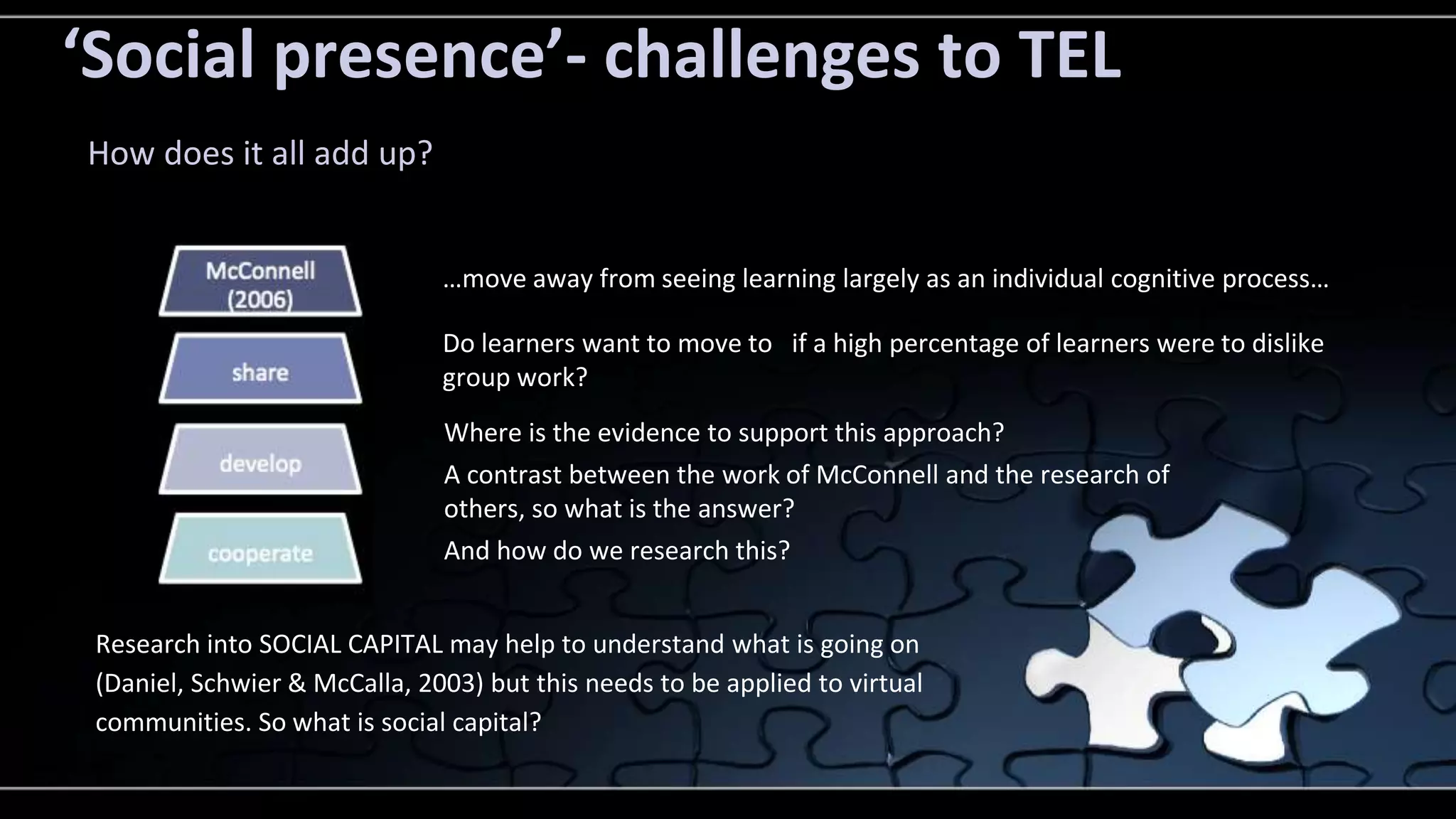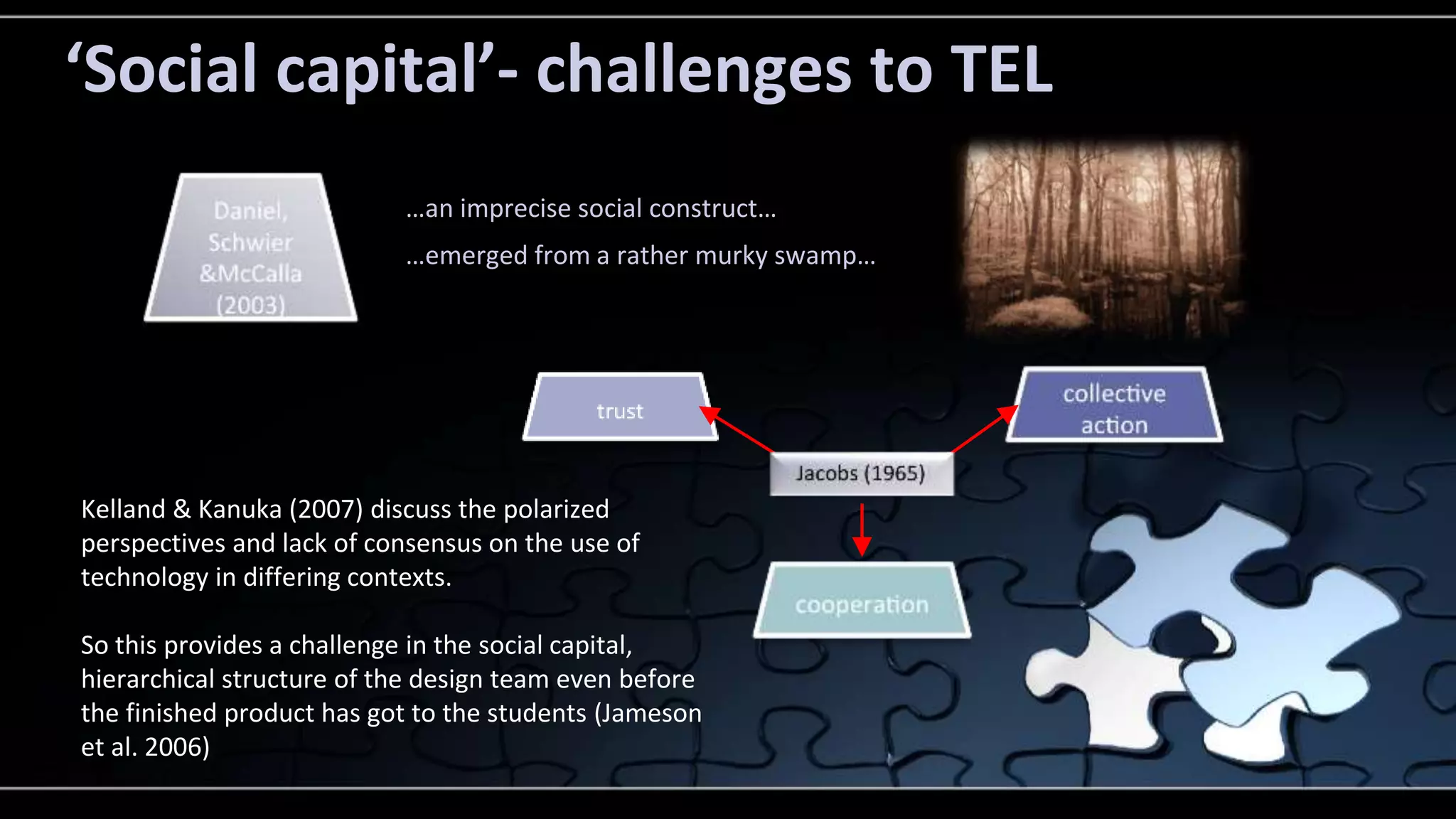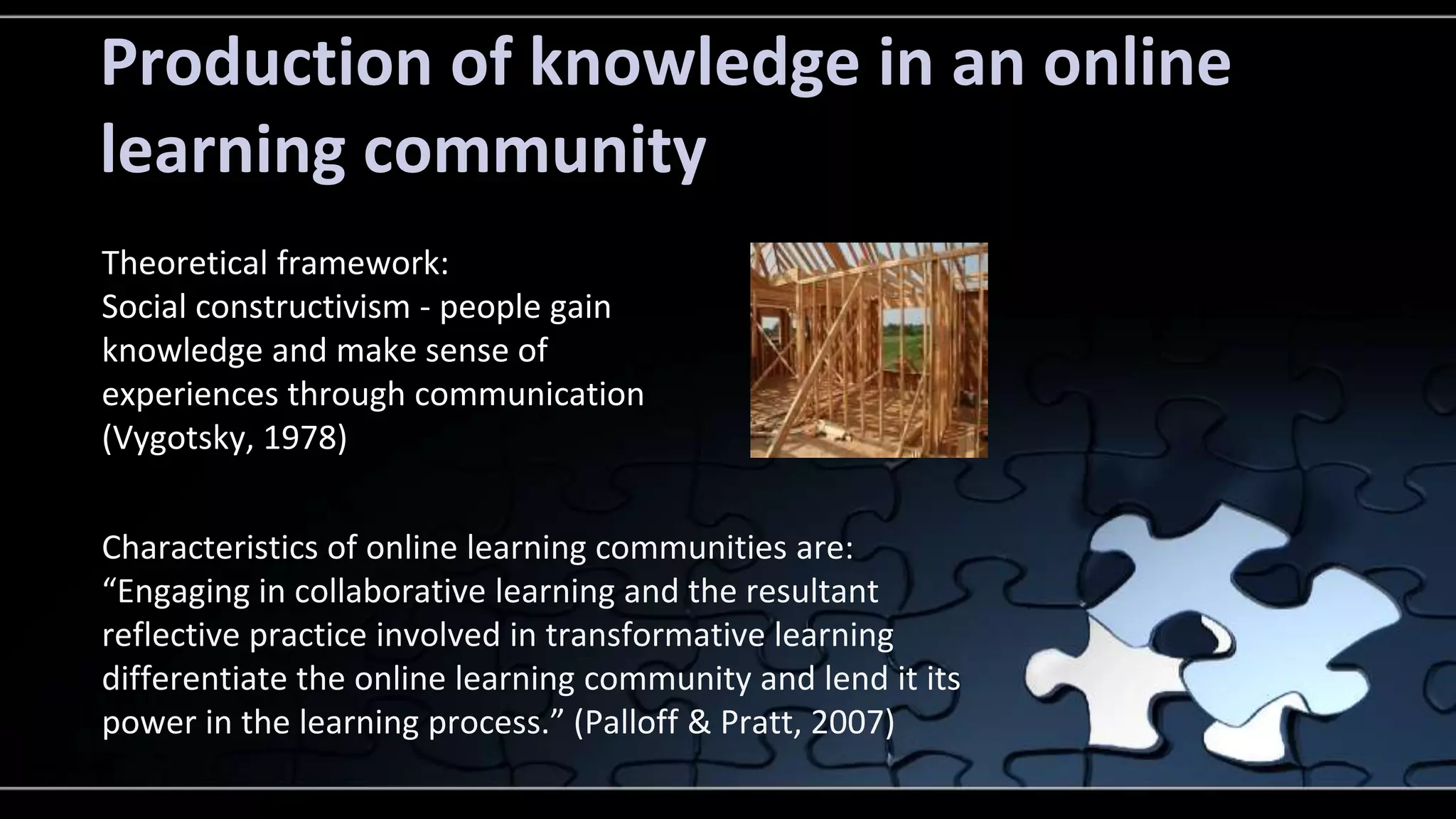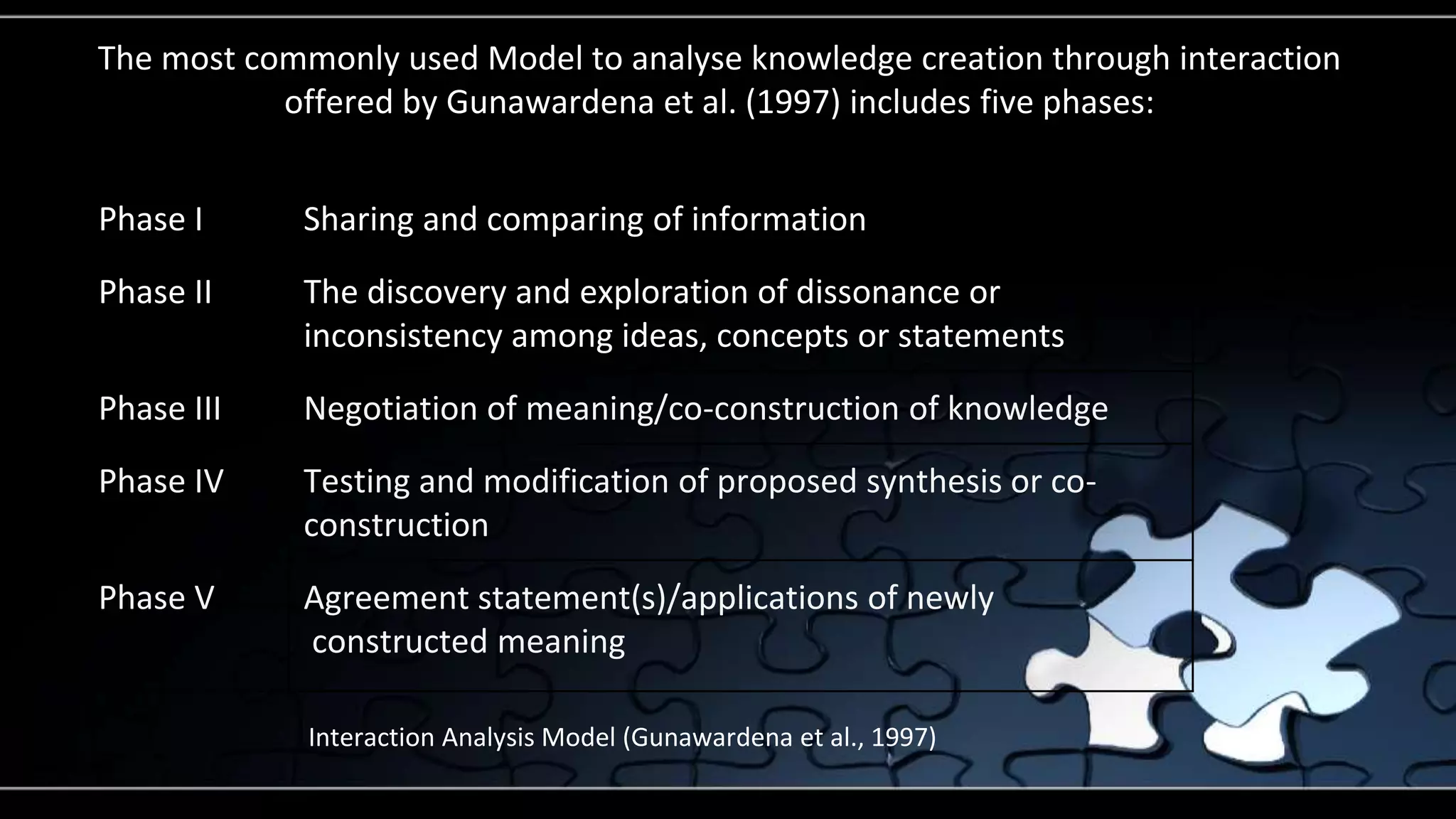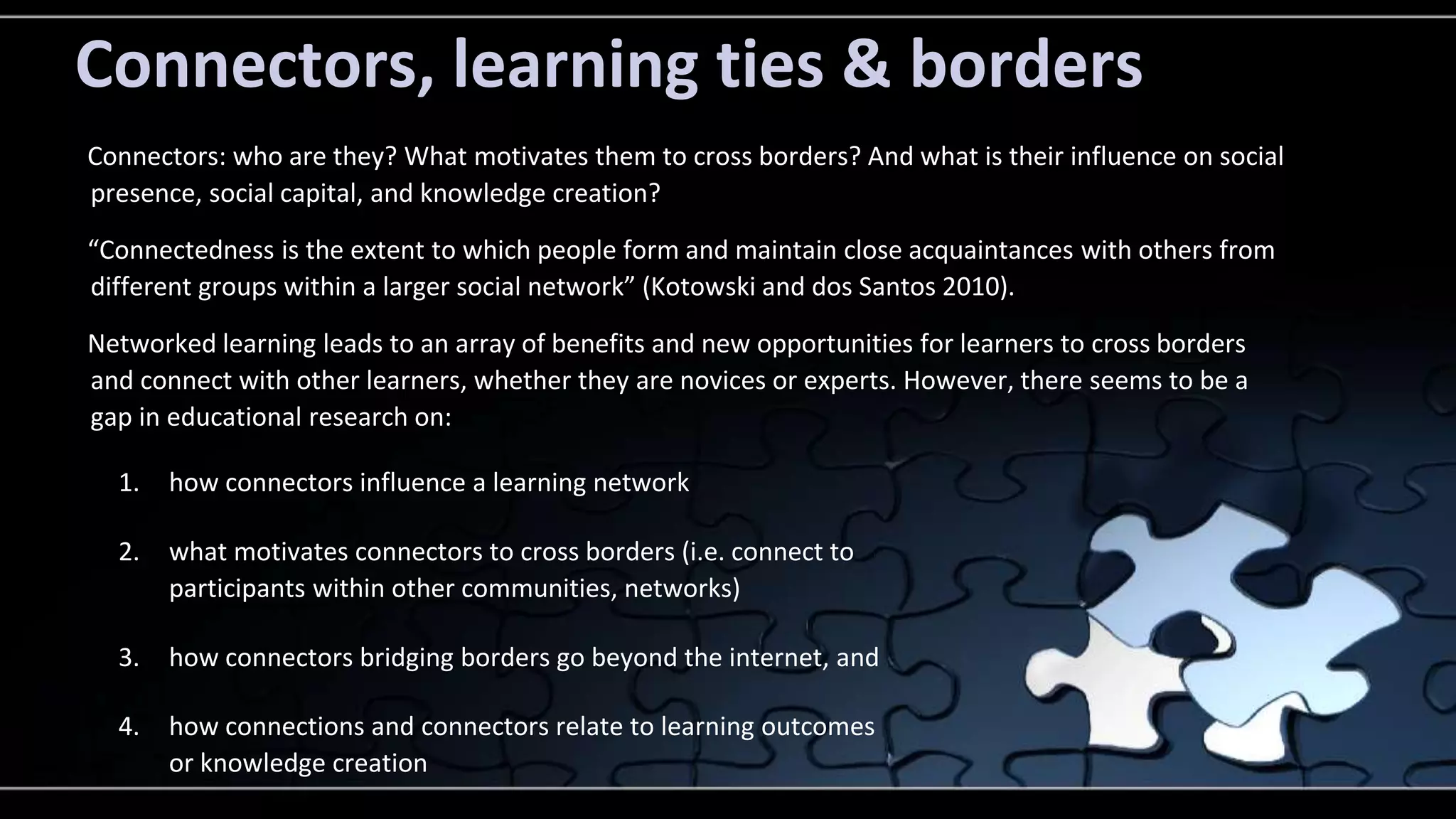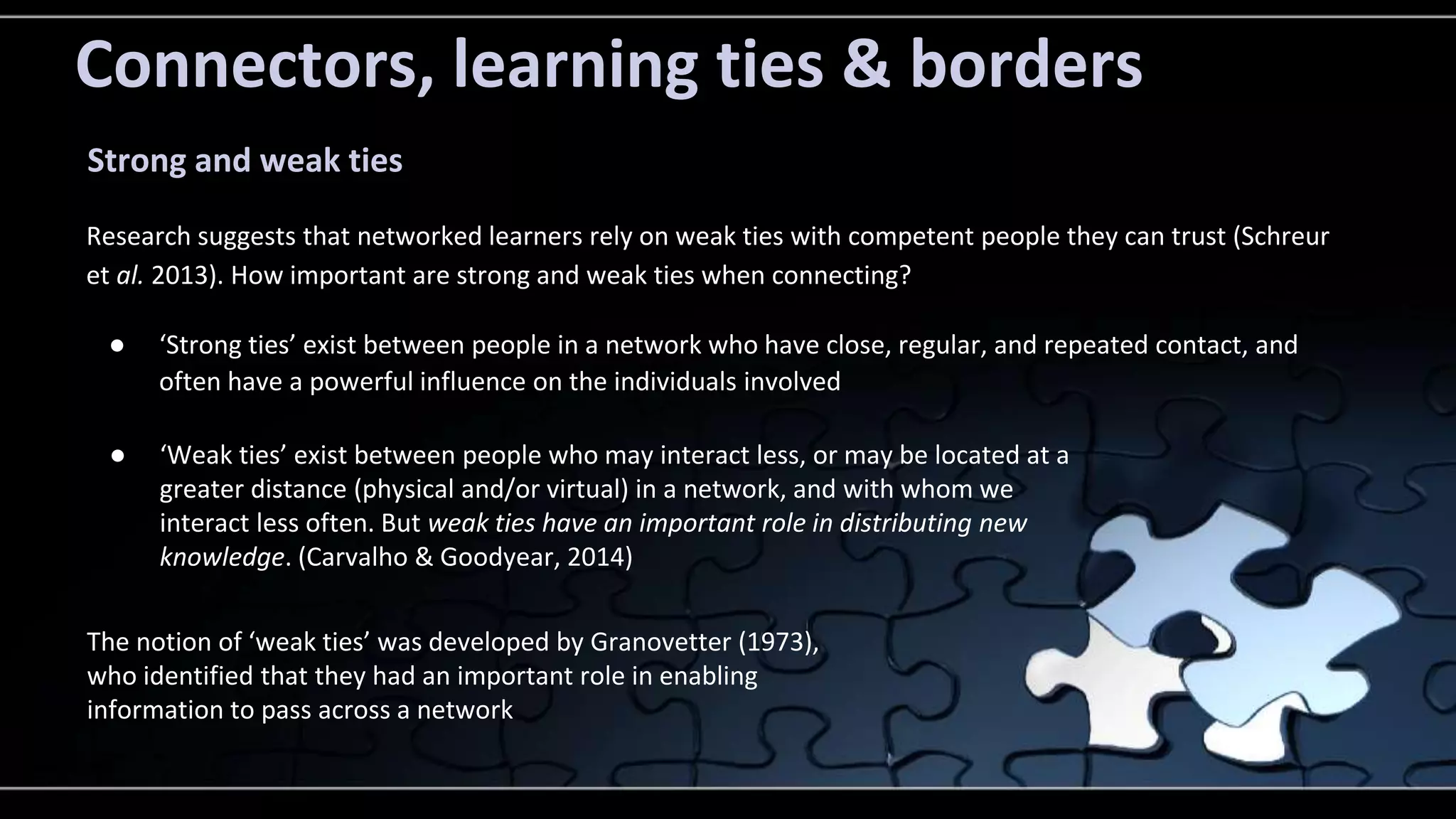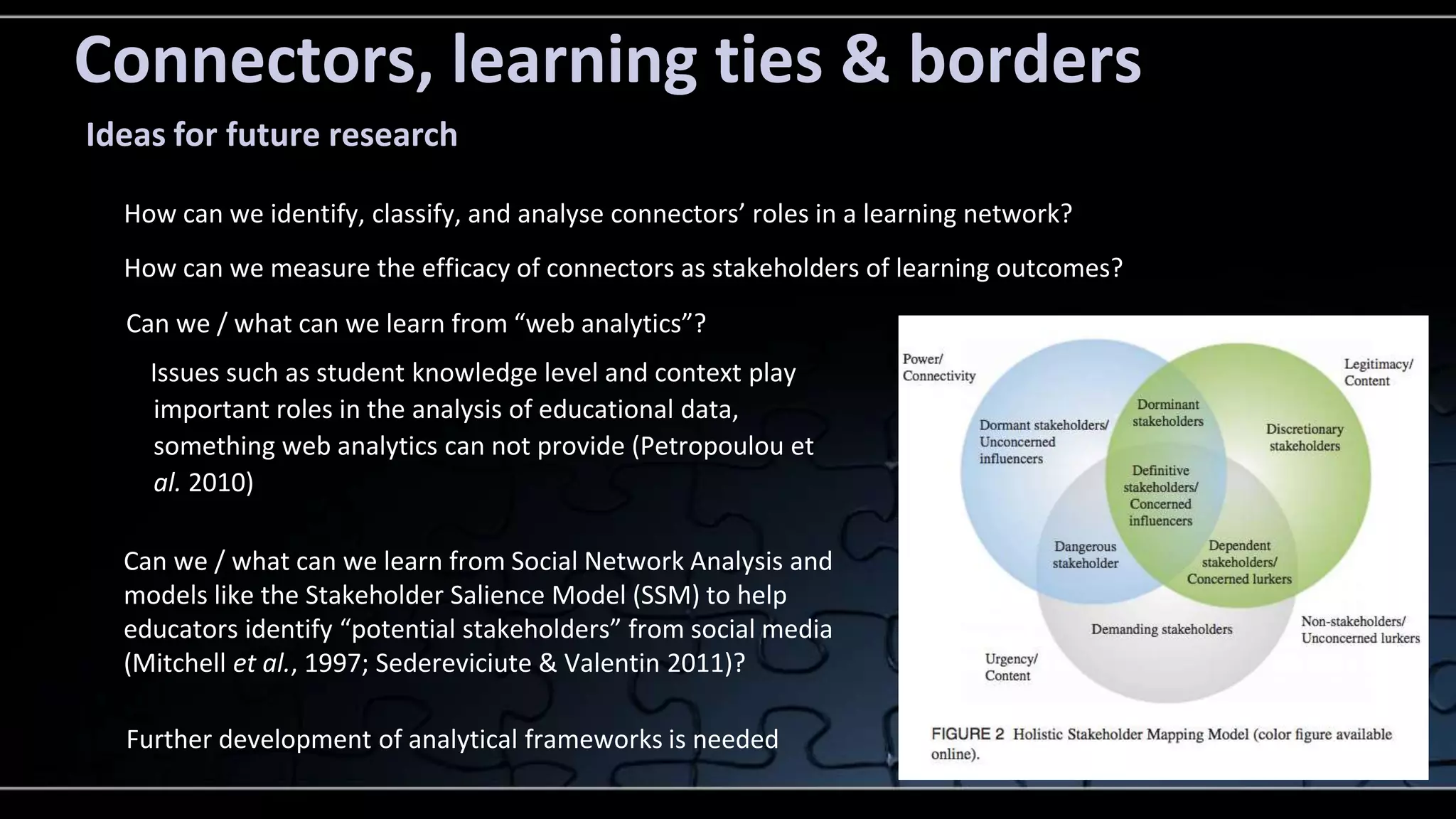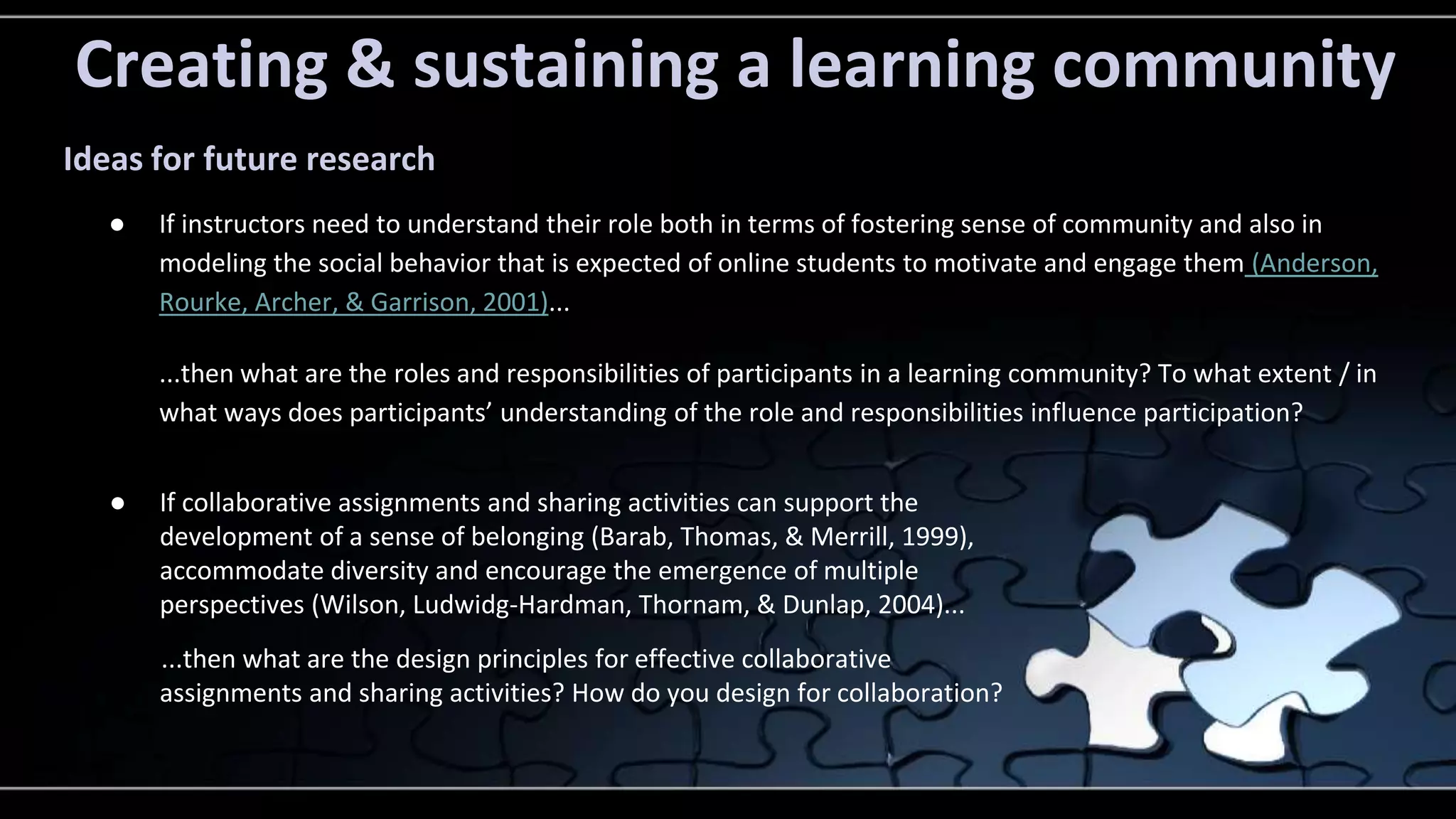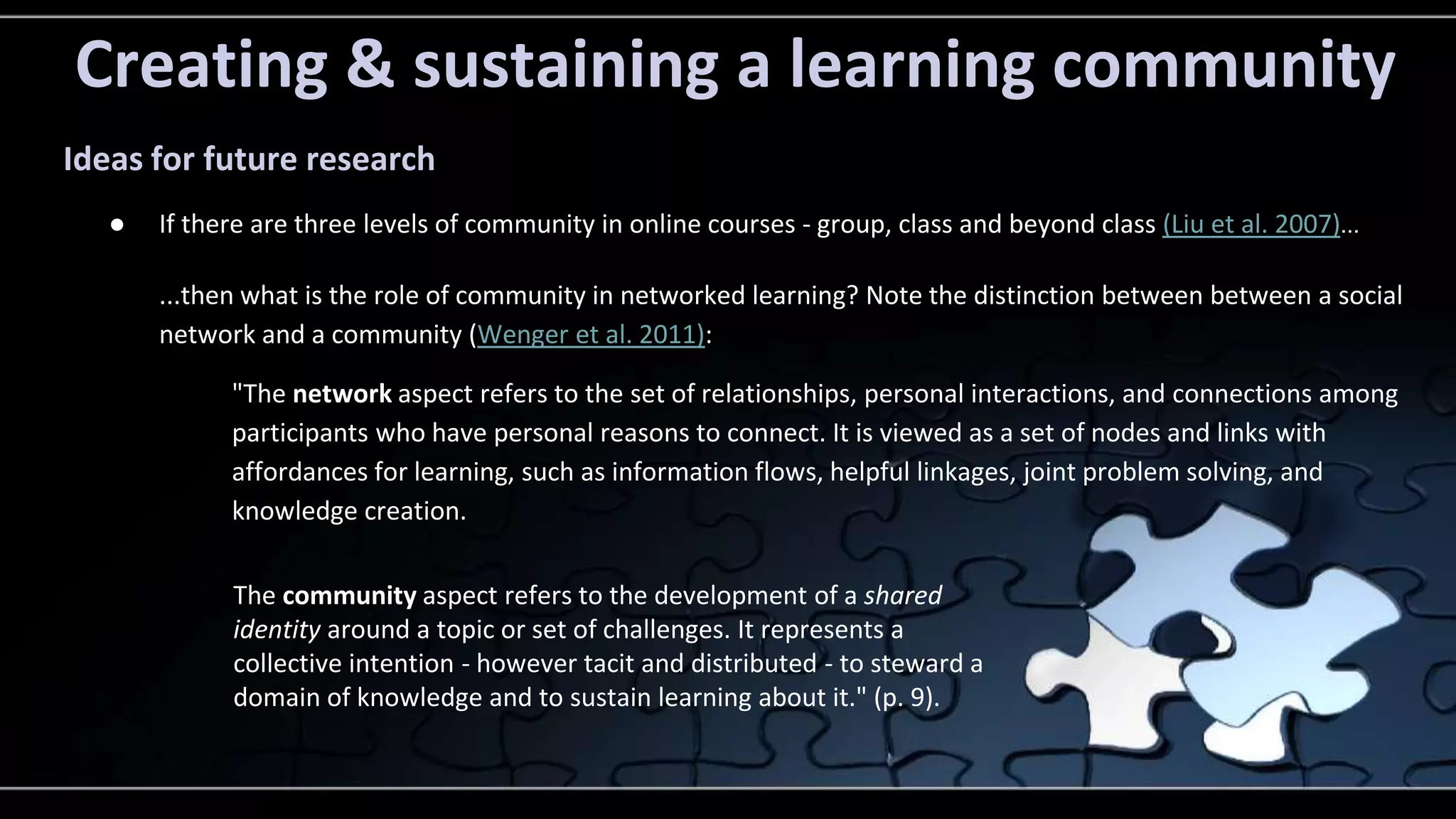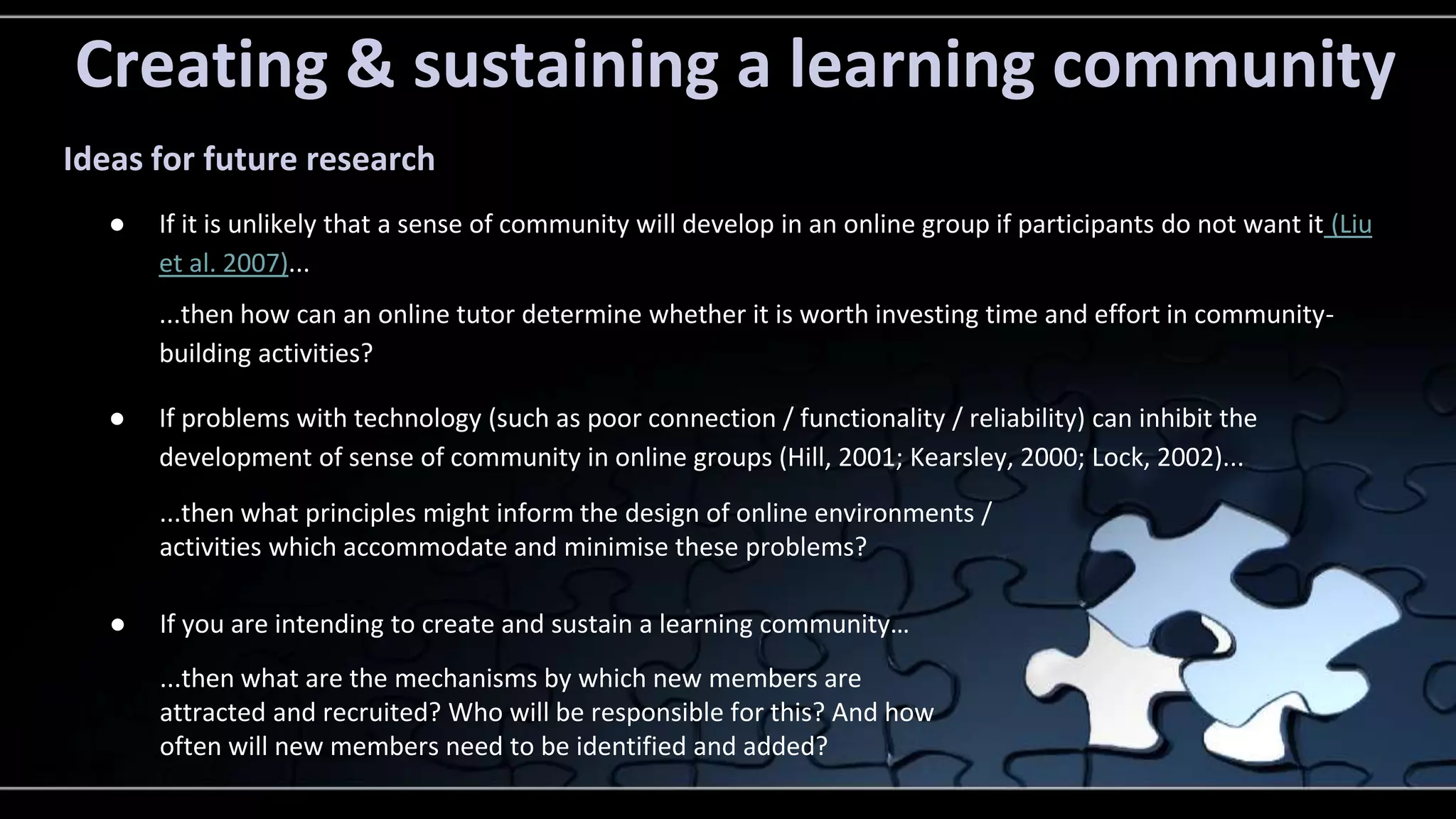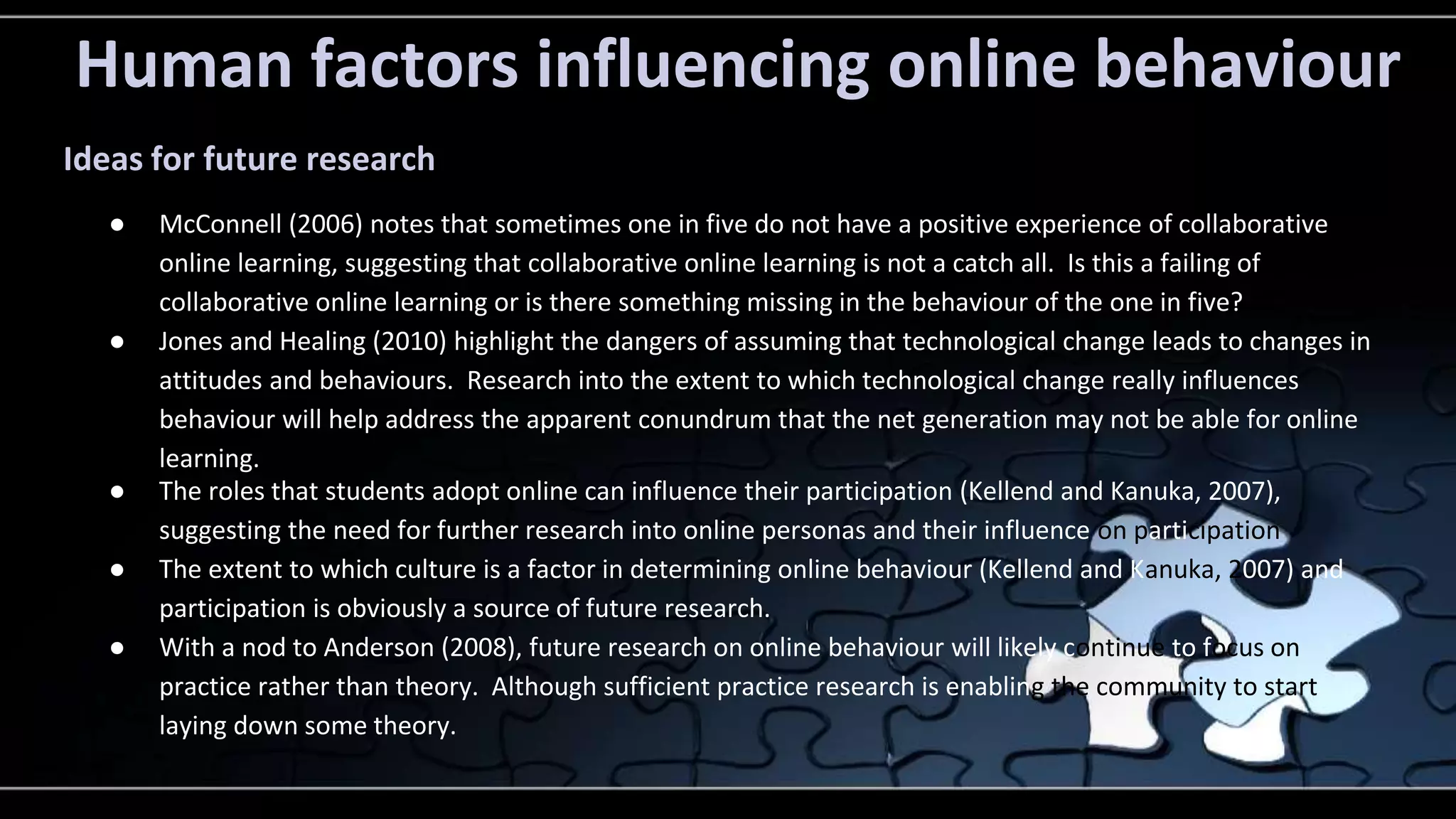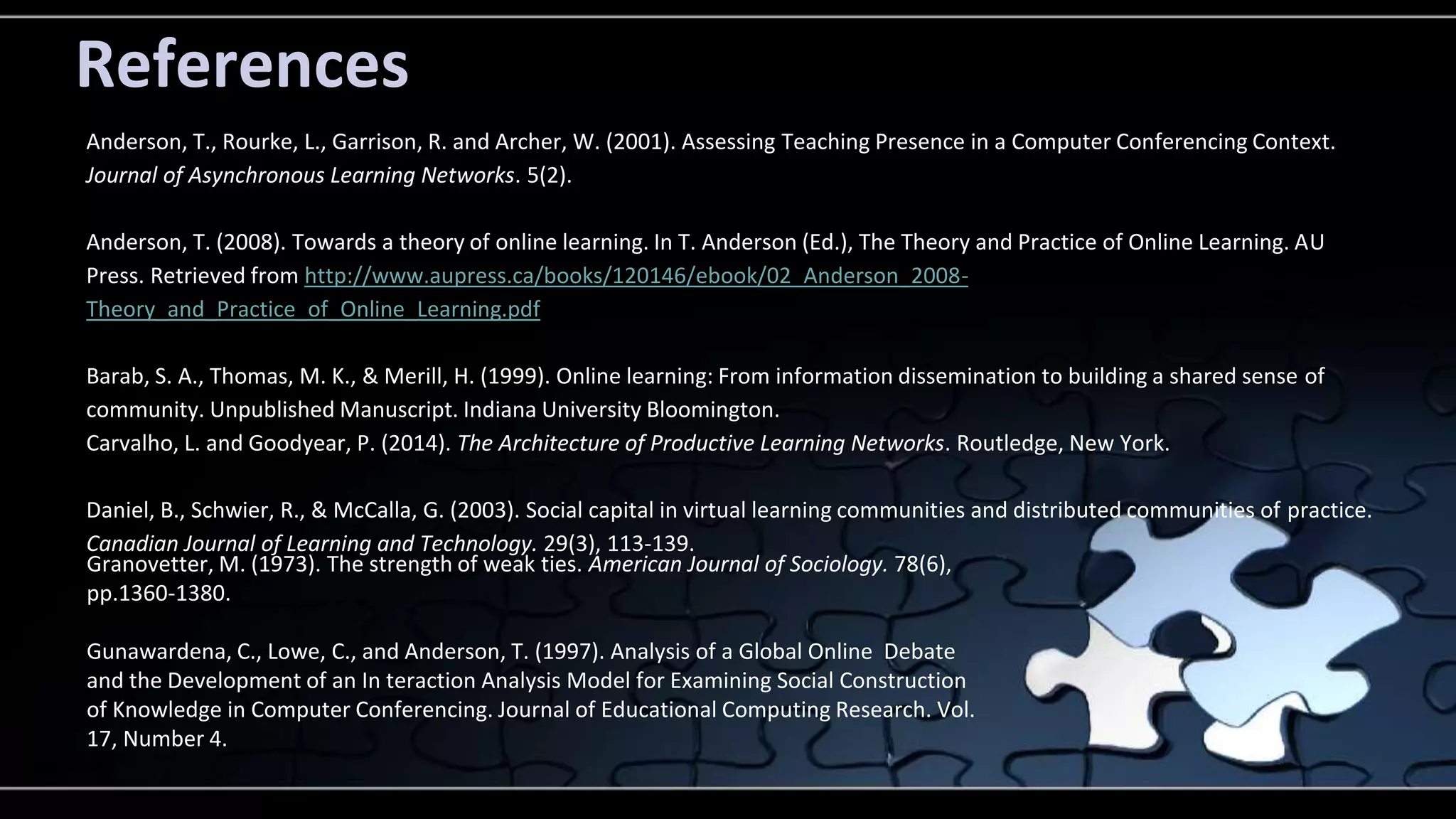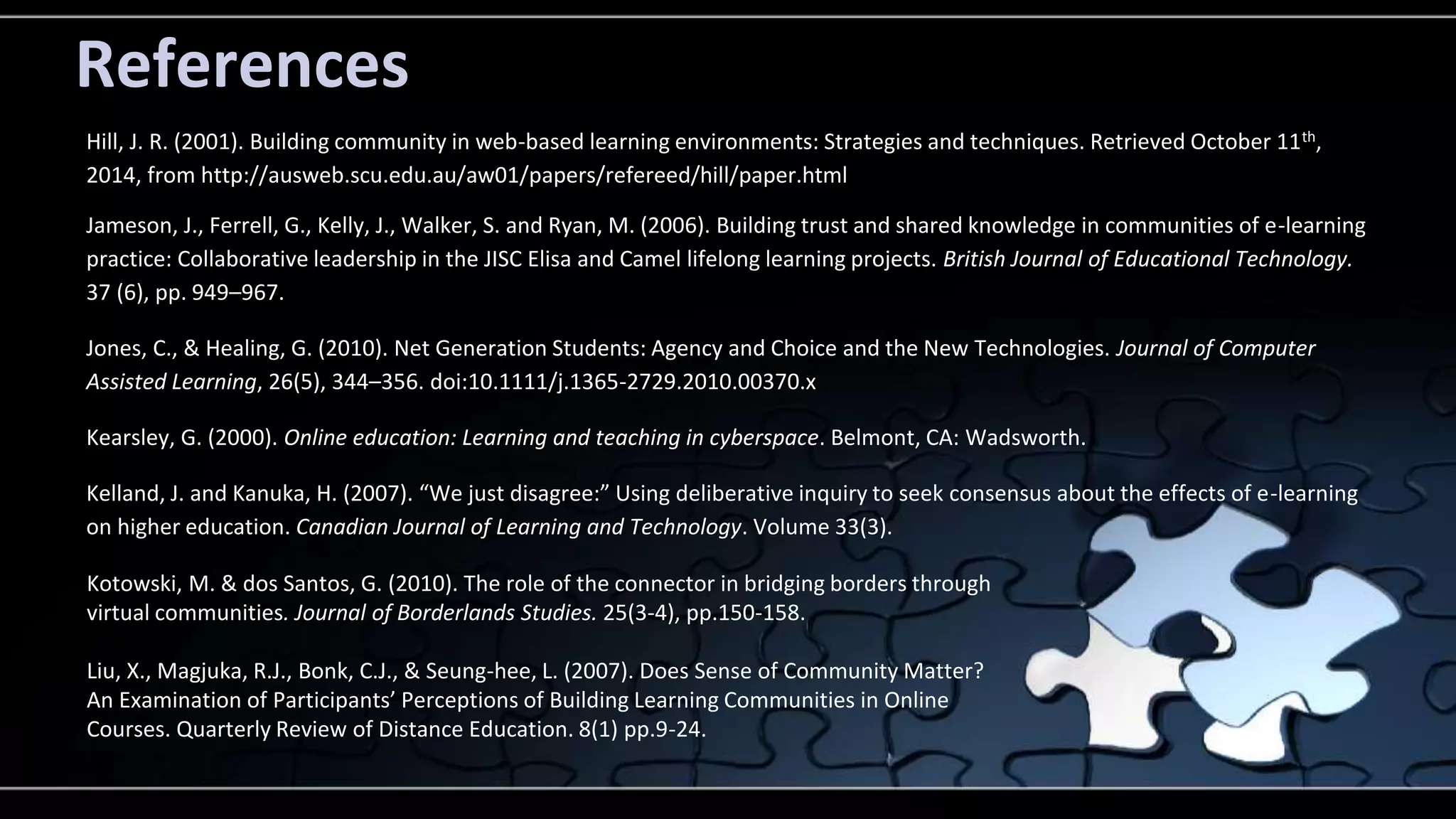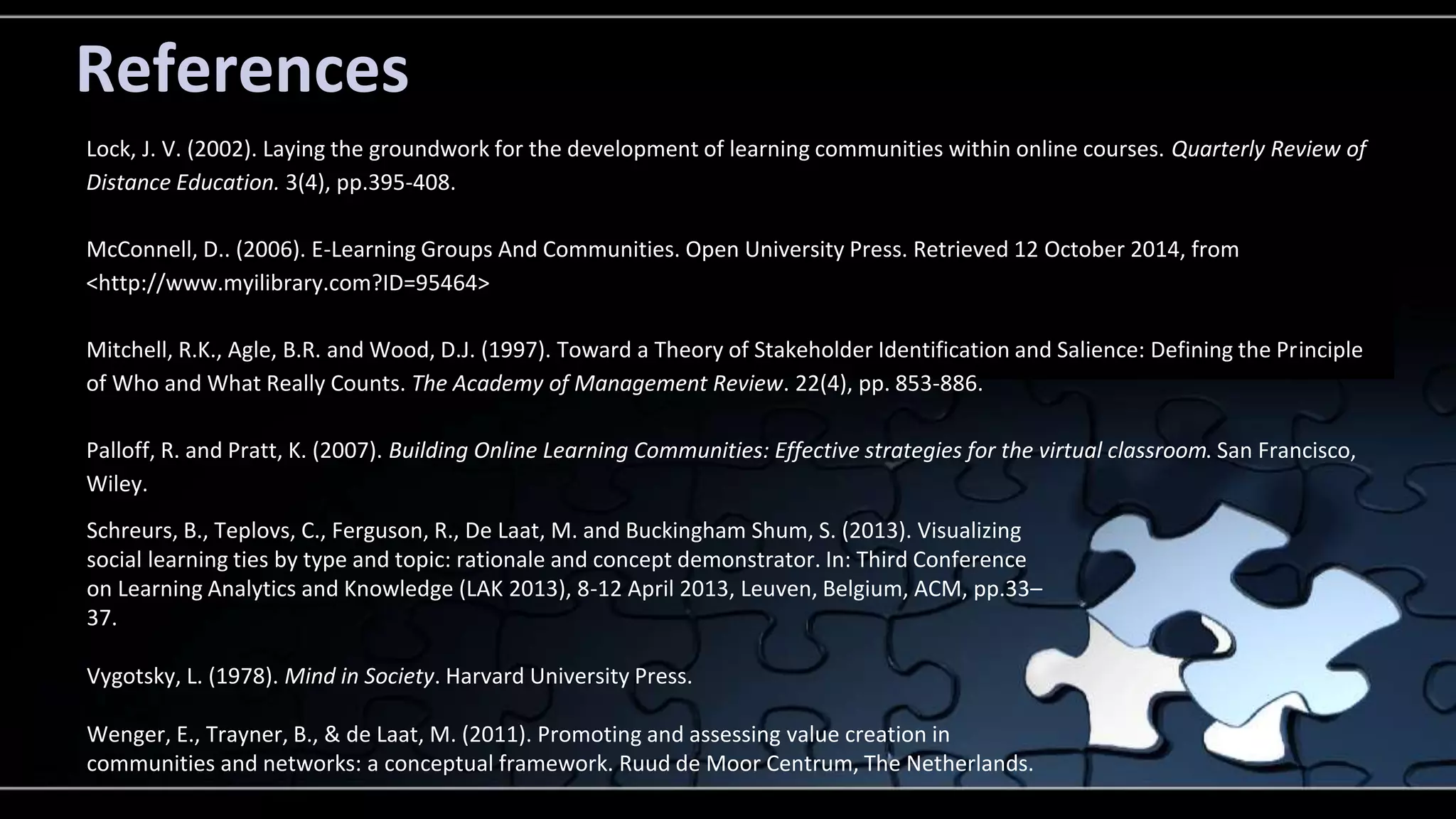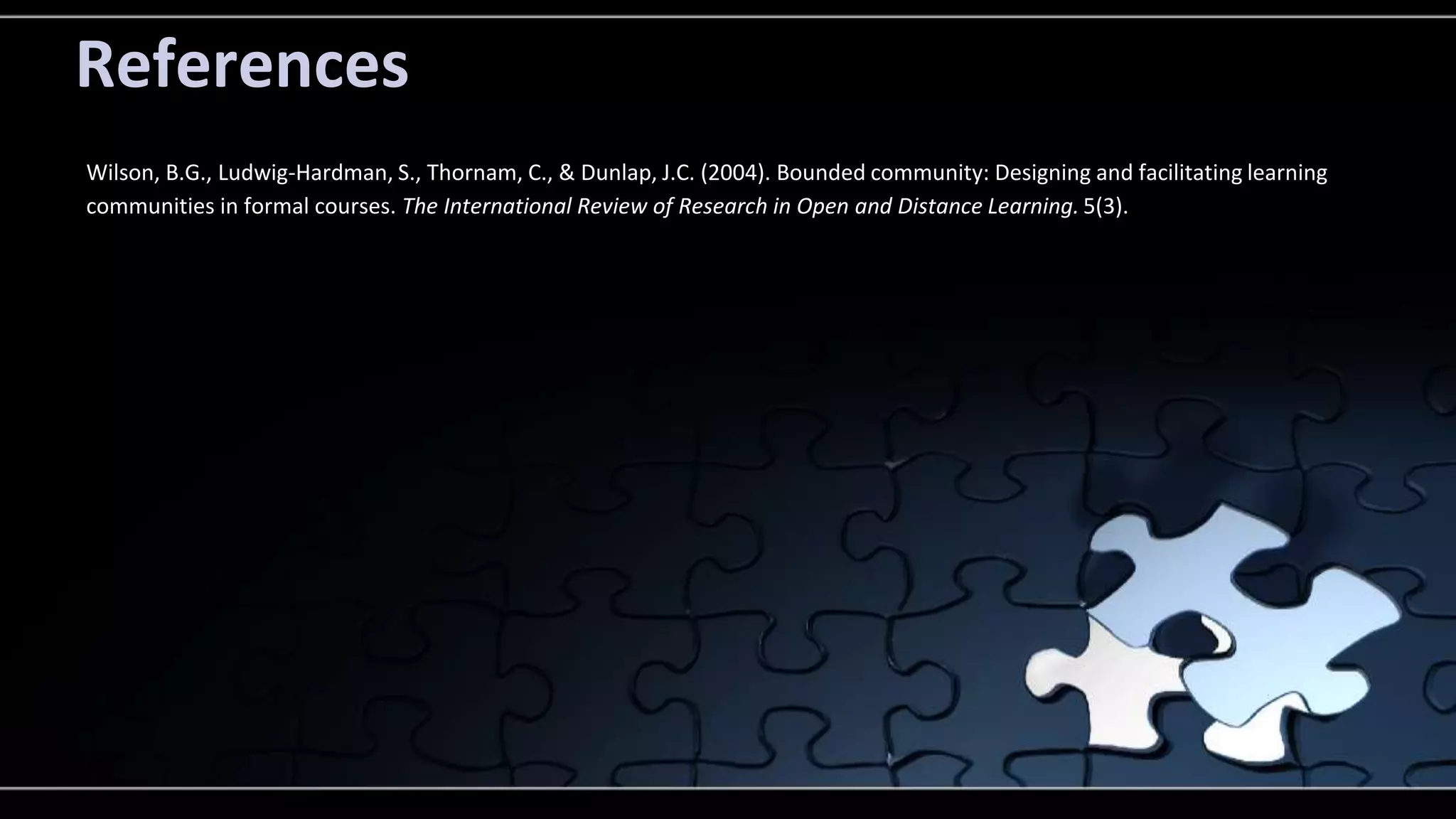This document discusses several topics related to online learning communities and knowledge creation, including social presence, social capital, connectors between learning networks, and designing collaborative activities. It proposes ideas for future research, such as identifying the roles of connectors, measuring their influence on learning outcomes, understanding the importance of strong and weak social ties, and designing online environments and activities that minimize technology problems and accommodate learner diversity. References are provided for many of the concepts and models discussed.

